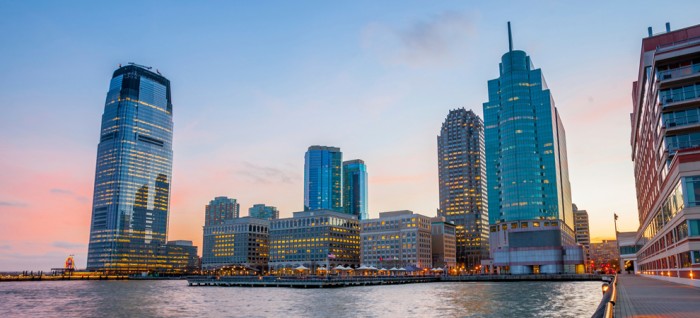
The New Jersey office market is an amalgamation of 565 very diverse municipalities, cities and towns. Its geography is unique, extending from New York City on the north all the way south to Philadelphia. We have urban areas, cities, suburbs, mountains, and of course the Jersey shore. We are often thought of as the country’s largest continuous suburb and we also have the densest population of any State in the US.
So, when describing something as complex as the New Jersey office market, we are by definition talking about a hybrid of multiple markets that sometimes move in tandem, but more frequently do not. I find that the New Jersey office market is simply one of the most diverse and challenging markets to follow anywhere.
Looking from the statistical side, we see that the average vacancy rates for office space Statewide are above twenty percent. This can be an extremely misleading statistic as some areas like Metro Park are at or near full occupancy, while others like Parsippany have vacancy rates that are approaching 30 percent. When comparing office space to industrial space we see the difference here is like night and day, as Industrial properties are on fire with vacancy rates near historic lows.
The majority of New Jersey’s office properties were constructed in the 1970’s and 1980’s. This means that most office buildings were designed before we had cell phones, computers or anyone even heard of the internet. Many of our office buildings still rely on all-electric heating systems using building systems that were designed around the time of the moon landing and the invention of the first electronic calculators. While the majority of our office properties have been very well maintained over the years, with nice lobby and common area retrofits and many generations of office tenants coming and going, the buildings we see today are very similar to the buildings from 50 years ago, both in technology and structure.
In many parts of the country where new office construction is still ongoing, we learn that a whole new generation of construction systems and materials has taken place. Green building technology is where energy efficiency marries environmentally friendly and sustainable building materials. The new green office buildings are 35 percent more energy efficient. New HVAC systems have more efficient environmental control of air quality resulting in 25 percent less sick days for employees due to colds and flu in winter months. That’s right, 25 percent. That’s a huge cost savings.
The challenge for our State and Federal government is to find ways to economically incentivize Landlords in this State to retrofit our older building infrastructure with newer more energy efficient and environmentally friendly systems. Right now, there is little incentive to upgrade beyond the simple swap of light bulbs. Many buildings are moving from older fluorescents to the newer LED fixtures.
Another challenge is the changing definition of the work space. Most of our office interiors are still using sheetrock partitions for offices. The newer tech companies are leading the way with open work environments, plug and play open bench seating, meeting areas, lounges and sky-high unfinished ceilings. Flex hours, 4-day work weeks and work from home employees may be having an adverse affect on the long term projections for the growth of office space demand.
When navigating through the many diverse markets of a State like New Jersey, it is important for tenants and buyers of commercial property whether renewing the lease or relocating the office to work with an experienced tenant representative—one who has knowledge and access to the most recent availabilities and interactions of all the interweaving markets. Do you want to have an expert who has this knowledge on your side of the table? Why not call us for a free lease review and find out why, at Dickstein Real Estate Services, “Our Difference Is Your Advantage®”.
Regards,
Lawrence Dickstein
Categorised in: News, Real Estate Markets


